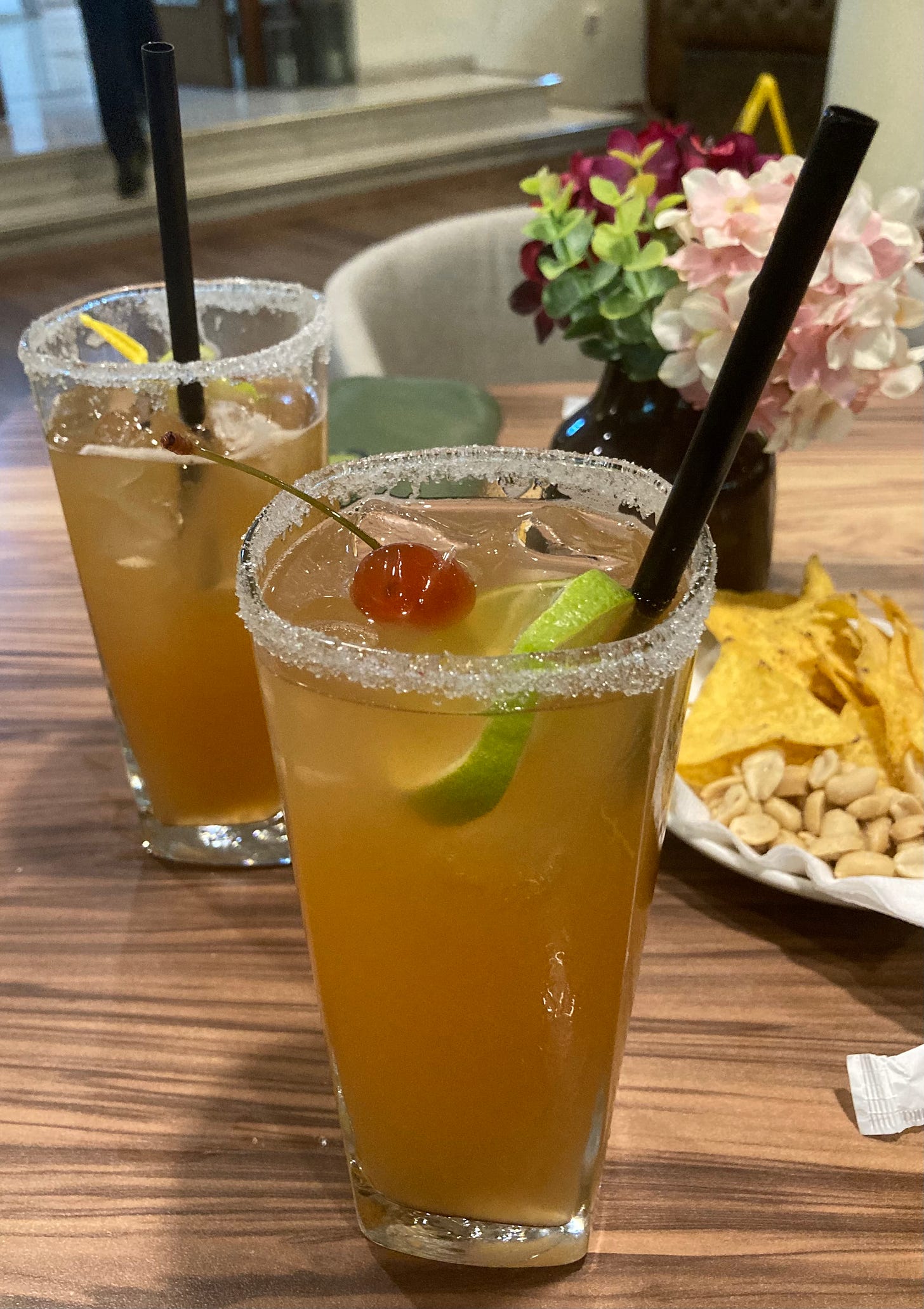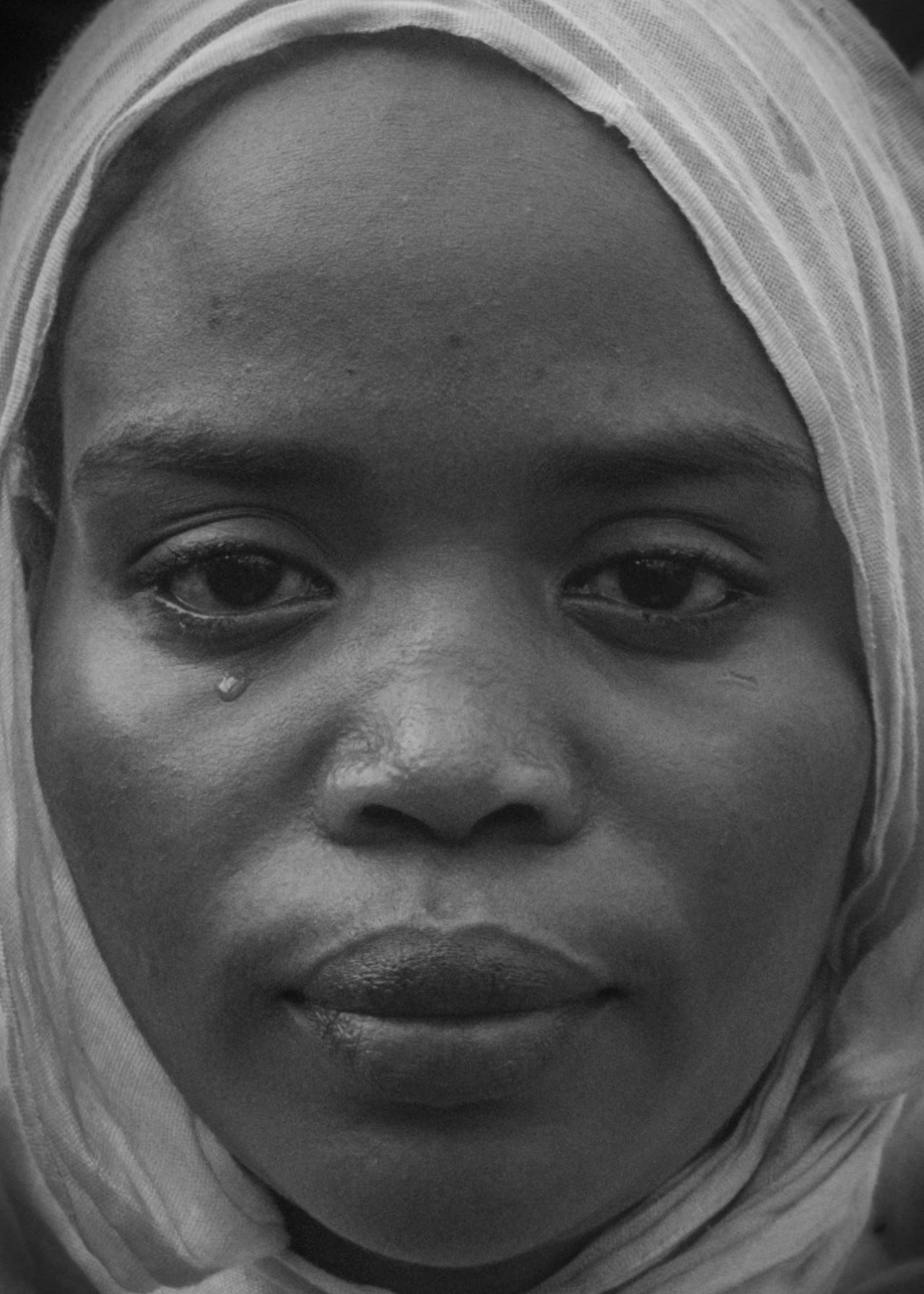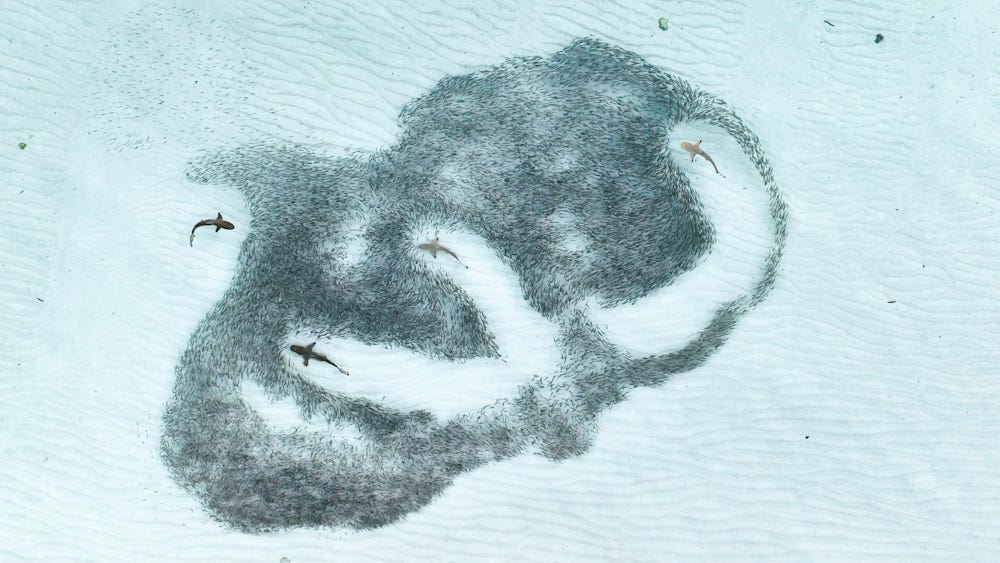3 January 2025. Books | Photographs
Some books I read in 2024 worth noting // Photographs from 2024. [#625]
Welcome to Just Two Things, which I try to publish a couple of times a week. Some links may also appear on my blog from time to time. Links to the main articles are in cross-heads as well as the story. A reminder that if you don’t see Just Two Things in your inbox, it might have been routed to your spam filter. Comments are open.
1: Some books I read in 2024 worth noting
Before we get into the swing of the new year, I’m going to write briefly about some of the books that left an impression on me in 2024. These aren’t in any particular order, and there’s a mix of non-fiction and fiction.
Dan Davies: The Unaccountability Machine
Although these are not in a particular order, this is the book I’ve found myself coming back to more than the others. Davies sets out to understand why so many modern firms are designed in such a way that it is impossible to communicate with them (“Please hold: your call is important to us.”)
He finds that this is because of failures in the way that their information and feedback systems work, but that this—for them—might be a feature rather than a bug.
This takes him into a project that is about revisiting and popularising the management cybernetics thinking of Stafford Beer, and in particular the viable systems model, which you realise when you read it may have been ahead of its time. (I wrote about this part in Just Two Things).
In turn, this takes him on to the failings of modern finance and economics, which I’ve been meaning to write about here as well. But that also requires me to read Brad Delong’s 4,000 word online review, and I haven’t found time to do that yet.
Abby Innes: Late Soviet Britain
In some ways, Abby Innes’s book is a companion piece to The Unaccountability Machine. It’s trying to understand the manifold failings of late-stage capitalism (at least they are failings from the perspectives of consumers, citizens, and taxpayers), but she comes at it through political economy and organisational behaviour.
The title is deliberately paradoxical, and the book is dense in places. All the same, she argues that the combination of neo-classical assumptions about how the world works, and neo-liberal assumptions about the way the state works, creates a self-contained and recursive system which serves the interests of producers, and not really anyone else.
In this it is like the Soviet economy, which was a homologous system despite its different ideological underpinnings. The chapter on the way this works in purchase and delivery of outsourced public services is a model of analytical clarity.
Again, I’m planning to come back to this during the year.
Georgina Voss: Systems Ultra
(Image: via gsvoss.com)
This was the most interesting book I read about technology in 2024, and there is a reason for this. Although Voss is a technologist, she is also a designer and an artist who works with digital technologies in her installations.
Some of the best chapters in the book are drawn directly from her discussion of this work and the research that sits behind it. Perhaps because my father as an air traffic controller for 20 years, I was taken by the chapter about building a platform that used open aviation and airspace data for an exhibition in Brussels, and the uncomprehending call with a Belgian civil servant who didn’t seem to understand that this data was being publicly transmitted all the time.
The later discussion of digital payment systems for services that mainstream payment systems won’t touch is also fascinating, and the book comes with a lot of intriguing references, precisely because of her design background and feminist perspectives. The six chapter headings give a sense of her approach: Systems/ Scale/ Legacy/ Matter/ Deviance/ Breakage.
Paul Raven has a long interview with Georgina on his blog.
Constantia Soteriou: Brandy Sour/ Elif Shafak: The Island of Missing Trees
I visited Cyprus this summer, which remains a divided island despite occasional desultory attempts to broker a peace settlement. Nikosia is currently the only divided capital city in the world. I thought I handle on the trauma involved in the long insurgency campaign by EOKA, the 1974 invasion by Turkish paratroopers, and the dispossessions that followed it. I wasn’t even close.
Both of these books are a tribute to the ability of fiction to get to places like this. Brandy Sour is short—more the length of a novella—and traces the period from the 1930s to the later 20th century in Cyprus through vignettes that connect a series of inter-linked characters with a set of liquids, some alcoholic. Brandy Sour was invented in Forest Park, Cyprus’s first elite international hotel, so that King Faroukh of Egypt could pretend that he was drinking iced tea.
Elif Shafak’s novel, set in London and Nikosia over a period of 40 years, tells the story of a Greek-Turkish love affair, and how the trauma resonates across generations. Even when you try to suppress it, it squeezes out of the edges.
(Brandy sours at the Forest Park Hotel. Photo: Andrew Curry. CC BY-NC-SA 4.0.)
James Scott: Seeing Like A State
I thought I should read this rather than reading about it while reading Scott’s obituaries. I have a lot of notes and a partly finished review. My quick impressions here:
[1] It deserves its reputation that thinks differently about what states do, and by extension about the construction of modernity through measurement.
[2] It’s quite a bit too long. Scott was an anthropologist by training, and I know that in anthropology details often matter. But Seeing Like A Stateisn’t necessarily an anthropology book, and I could have happily swapped out some of the detail here for the case study that he had to cut from the book to make space for the detail.
[3] The claims he makes for visual tidiness of what he calls “high modernism”, are interesting, but they are not essential to the argument. Certainly architects played an important part in the development of modernism, but you can have modernism in Scott’s model without high modernism. In places it felt like it was being shoe-horned in.
[4] With the benefit of 25 years hindsight since the book was written, the argument that Scott makes in the final third of the book is probably the most compelling now. This is that everywhere, modernity is dependent on the informal systems that surround it. Brasilia, for example, works because of the informal settlements that were created around it, and which had nothing to do with Oscar Niermeyer’s design.
This is the world of ‘metis’ or practical knowledge, that is often local, informal, and not usually reliably recorded. But this informal world is airbrushed out of the picture almost everywhere, and the dependency is never acknowledged. Seeing like a state involves massive blindspots.
Samantha Harvey: Orbital
The winner of this year’s UK Booker Prize, and given to me as a Christmas present. And what a wonderful novel it is. Across the course of 150 years, it follows the six-person crew of the International Space Station, four men, two women, over the course of 24 hours and 16 orbits of the earth, passing repeatedly over a huge typhoon building in the western Pacific.
Harvey has clearly immersed herself deeply in the minutiae of life on the International Space Station, and it comes out as a fully realised world as it traverses the world in low orbit. I didn’t know, for example, that it was possible for astronauts/cosmonauts to talk to ham radio operators on earth.
It’s impossible not to read it as a story about the fragility of earth, of our relationship with technologies, or as a story about awe and wonder. It’s also an object lesson in how to write about how to write about our climate and biodiversity emergencies without writing about them.
Mostafa Ibrahim: The Tofranil poems
Finally: A set of poems that have stuck with me since I first read themearlier this year are the ‘Tofranil’ poems, published in LitHub by the Egyptian poet and activist Mostafa Ibrahim. He was a leading figure in the 2011 Tahrir uprising—his translator, Abdelrahman ElGendy says that his words were graffitied onto walls by protestors—and the poems are memories refracted through a conversation with an interlocutor, perhaps a therapist. Tofranil is an anti-depressant: across the poems, the dose gets stronger.
Here’s a very short extract:
They say the wounded
—when pain becomes
familiar—heal. The wheel
of the cosmos turns
them, blending
the past into
the future.
There’s a longer post about the Tofranil poems on Just Two Things.
2: Photographs from 2024
Magnum remains the most interesting photo agency in the world, and is still owned by its photographer members. In December. In the last week the president of the co-operative, Cristina de Middel, selected a set of striking images from Magnum’s photographers over the past 12 months.
Magnum had asked its members to submit three pictures from their archive from 2024 for her consideration, and de Middel made a choice from these.
“Another year gone...” she writes. “Another year where photography is being stretched to the limits, questioning itself, questioning what it even means to take a picture in a world where images are free, manipulated, and confused.”
The images largely speak for themselves, and there is a fair selection of images from our continuing wars. I’ve picked out from the whole piece an image that speaks to one of the forgotten conflicts. Salih Basheer’s project The Return examines the humanitarian impact of the ongoing war in Sudan by documenting stories of the millions of people displaced.
(Nairobi, Kenya. September 23, 2024. © Salih Basheer / Magnum Photos "We are from North Darfur State, Kabkabiya locality. My sister Raja and I were studying at Nyala University when the war began.”)
The Royal Society’s annual photography competition
The British Royal Society is the oldest corresponding society in the world, and it holds an annual photography competition for pictures on scientific subjects.
The winner this year, ‘The hunt from above’, by Angela Albi, shows four juvenile blacktip reef sharks attacking a group of hardyhead silversides in the sea near the Maldives.
(© Angela Albi)
She writes:
For my postdoctoral research, I study the interactions between blacktip reef sharks and baitfish schools in the Maldives. I use drones to capture behavior from above, focusing on whether the sharks coordinate during their hunts or how they interact with other species. This photo is a frame from our study drone footage, post-processed for contrast, exposure, and white balance.
The drone pilot was August Paula.
The Royal Society has also produced a short video showcasing the winners and runners up in each of the five categories.
j2t#625
If you are enjoying Just Two Things, please do send it on to a friend or colleague.








Thanks for spotting this! (Writing too quickly, as ever). I’ve updated it at Substack. - Andrew
Really enjoyed that. Thanks. Just a small note: Innes’ book is titled “Late Soviet Britain”.